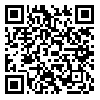دوره 7، شماره 3 - ( 7-1399 )
جلد 7 شماره 3 صفحات 42-33 |
برگشت به فهرست نسخه ها
Download citation:
BibTeX | RIS | EndNote | Medlars | ProCite | Reference Manager | RefWorks
Send citation to:



BibTeX | RIS | EndNote | Medlars | ProCite | Reference Manager | RefWorks
Send citation to:
Ghaffaricherrati S, Haditabar E, Ghodsi S E. Examining pornography in cyberspace from the perspective of ethics, spirituality and medicine. Health Spiritual Med Ethics 2020; 7 (3) :33-42
URL: http://jhsme.muq.ac.ir/article-1-346-fa.html
URL: http://jhsme.muq.ac.ir/article-1-346-fa.html
غفاری چراتی صالح، هادی تبار اسماعیل، قدسی سیدابرهیم. بررسی هرزهنگاری در فضای مجازی از دیدگاه اخلاقی، معنویت و پزشکی. Health, Spirituality and Medical Ethics. 1399; 7 (3) :33-42
1- ، salehghafari93@gmail.com
چکیده: (3159 مشاهده)
چکیده
پیشزمینه و اهداف: هرزهنگاری در فضای مجازی یکی از چالشهای نوظهور و چند بعدی در جامعه محسوب میشود. هر رشته بر حسب دیدگاه خود معیارها، دلایل، رویکردها و راهکارهای مختلفی را ارائه میدهد؛ اما این پدیده چند بعدی، تمامی ابعاد زندگی جوامع بشری را در ابعاد فردی و گروهی درگیر کرده و تبعات منفی را به همراه داشته است. در این راستا، مطالعه حاضر با هدف تحلیل و تبیین هرزهنگاری از دیدگاه معنویت، اخلاق و پزشکی انجام شد. شایان ذکر است که رویکرد کنونی قانونگذاری، توسط گفتمان اخلاقی و پزشکی با تأکید بر معنویت افراد انسانی جامعه به چالش کشیده میشود.
روش کار: مطالعه حاضر به صورت مروری نظامند در سال ۱۳۹۸ در پایگاههای اطلاعاتی داخلی از جمله Magiran و Noormags بدون محدودیت زمانی با کلیدواژگان "هرزهنگاری، هرزهنگاری و معنویت، هرزهنگاری و پزشکی، هرزهنگاری و اخلاق" انجام شد.
یافتهها: براساس معیارها و دلایل مختلف حاکم بر هرزهنگاری رایانهای- اعم از اجتماعی و اخلاقی- و همچنین معیار پزشکی، هرزهنگار رایانهای دارای شخصیتی منحرفگونه و بیمار است. مغایر با دیدگاه قانونی که هرزهنگار رایانهای را مجرم محسوب نموده و برای آن مجازات در نظر میگیرد، نوشتار حاضر با دیدگاه پزشکی و براساس رویکرد معنویت و سلامت جامعه، اقدامات اصلاحی، تربیتی و بالینی را به عنوان اقدام مطلوب گزینش نموده و آن را به سیاستگذاران پشنهاد میکند.
نتیجهگیری: براساس نتایج مطالعه حاضر میتوان گفت که هرزهنگاری رایانهای علاوه بر اینکه یک جرم محسوب میشود، تبعات شدید و مخربی را برای سلامت اخلاقی و معنوی فرد به همراه دارد. این پدیده اثرات منفی بر ابعاد اخلاقی فردی و گروهی در تمامی سنین دارد و به صورت بالفعل میتواند سلامت یک فرد در تمامی ابعاد آن به ویژه سلامت اخلاقی وی را مختل نماید. اختلال در سلامت فردی یک جامعه برابر با سلامت روانی و معنوی پایین آن جامعه است.
فهرست منابع
1. Ghaffari Cherati S, Ekradi S. Preventing Cyber Fraud Obstacles and Ways to
2. Fix It, Tehran: Raham Andishe Publication; 2016. p 34-17..
3. Elsan M. The Rights of Cyberspace, Tehran: Danesh City Press; 2010. p194-190.
4. Celdy A. Crime and Prevention Deviation, Social Welfare Quarterly. 2001; 25: 260
5. Ahmadi H, Nikpour Ghanaati L. Application of Qualitative Methods in the Study of Social Deviation, Journal of Social Sciences Shiraz University. 2004; 5: 12-1
6. Downs R, Tafaim Edel, London: Cambridge University Press; 2007. P. 10-3
7. Najafi Abrandabadi A. Criminal Policy Lesson Reports, Tehran: Shahid Beheshti University; 2005. P. 70-70
8. Akbari M, Fatima's gh. Causes and Effects of Government Response to Deviation in Iranian Criminal Policy. 2017; 1: 40-11
9. Gholami H. The Principle of Criminal Law. Tehran: Math Publishing; 2013. P. 17-11
10. Norbaha R. Field of Criminology, Tehran: Ganj Danesh Press; 2014. P. 14-4
11. Raijian asli M. Strategic Explanations of Withdrawal and Delinquency in Criminal Law Intervention, Law Journal of Justice. 2001; 44: 118-93
12. Giddens A. Sociology. Translated by Hasan Chavoshian. Tehran: Ney Press; 2011. P. 294-290
13. Najafi Abrandabadi A. Encyclopedia of Criminology. Tehran: Treasure and Knowledge Publishing; 2018. P. 47-45
14. Danesh T. Who is the criminologist?. Tehran: Kayhan Publication; 2017. P. 195-90
15. Parsa M. The Field of Psychology. Tehran: Payvand Publications; 2009. P. 281-270
16. Douglas C. Criminal Behavior, Translated by NAJA Research Center, Tehran: NAJA Publication; 2004 .p. 262-269
17. Goodarzi F. Forensic Medicine. Tehran: Einstein Publishing; 2018. P. 139-128
18. Ghodsi Z, Mojtahed Soleimani, Abolhassan. Cybercrime Against Chastity and Ethics in Family Privacy, Journal of Jurisprudence and Family Law. 2012; 4: 118-97
19. Bai H, Babak P. Legal Jurisprudence Review of Computer Pornography; Islamic Law Journal. 2013; 22. 125-95
20. Qudsi E, Mahdi B. Audio-visual crime in the realm of chastity and public morality. Journal of Jurisprudence and Islamic Studies. 2002; 4: 117-97
21. Ali Pour H. ICT Criminal Law. Tehran: Khorsandi Publication; 2019. P. 303-295
22. Mill JS. A Treatise on Freedom. translated by Javad Sheikh Islam; Tehran: Scientific and Cultural Publishing; 1986. P. 284_240
23. Rezaei M, Maleki H. An Investigation of the Teaching Practices of Religious Values on the Internalization of Chastity Value. Journal of Islam and Educational Research. 2012; 7: 124-101
24. Habibzadeh M. Punishment for Prohibition and its Conflict with the Constitution. Journal of Constitutional Rights. 2003; 3: 24-1
25. Nobahar R. Application of the Minimum Principle in Criminal Law. Journal of Criminal Law Teachings. 2010; 1: 118-91
26. Ghafari Cherati S, Zahedian M. Hijab Crime Analysis in Subject Rules. Journal of Mazandaran Bar Association. 2016; 4: 52-25
27. Saffar Dastgerdi M. Hijab in Sociological Attitude. Journal of Women's Strategic Studies. 2013; 22: 106-91
28. Rahmadel M. Criminal Law on Drugs, Tehran: Justice Publishing; 2015. 212- .p.208
29. Eskafi M. Survey of youth awareness of citizenship rights and duties, and its effective factors in Mashhad. Journal of Social Sciences. University of Mashhad. 2009;9: 33-1
30. Panahi M, Ghiasvand A. Sociological Analysis of Citizenship Assessment among Citizens of Tehran. Journal of Social Analysis of Order and Inequality. 2015; 61: 65-45
31. Habibzadeh M. Pathology of the Iranian Criminal Justice System. Journal of Social and Human Sciences. 2012; 41
ارسال پیام به نویسنده مسئول
| بازنشر اطلاعات | |
 |
این مقاله تحت شرایط Creative Commons Attribution-NonCommercial 4.0 International License قابل بازنشر است. |








